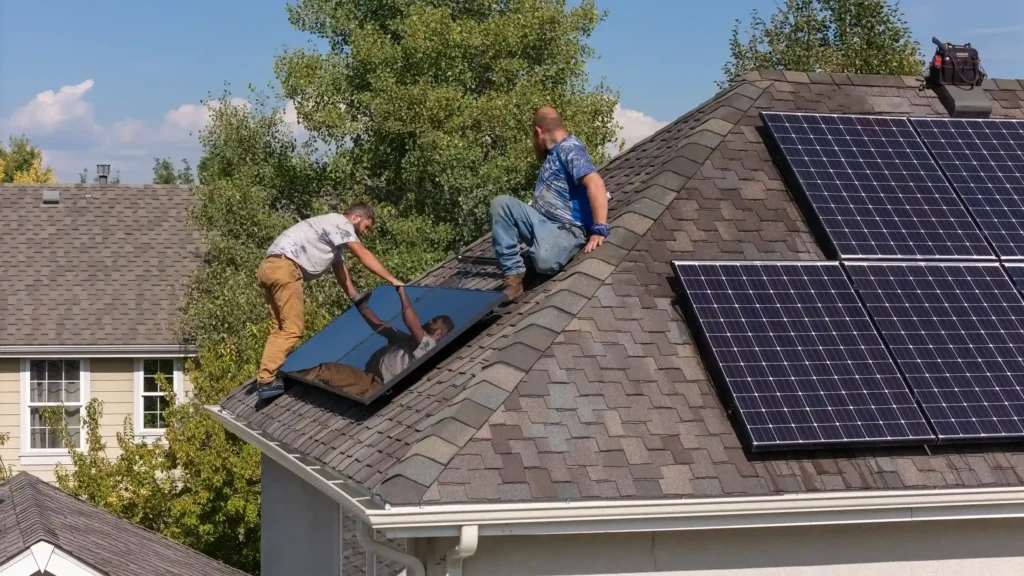
When having solar panels installed in Colorado, nothing is as important as proper solar panel mounting. The occasional high winds and the almost daily sunlight provide both a challenge and an opportunity. Your panels not only need to be at a proper angle to get the full benefits of solar energy but also withstand Colorado weather conditions without compromising your existing roof. Here’s an overview of the components that Remove and Replace Solar works with to secure solar panels in a safe, efficient way.
Solar Panel Mounting Hardware and Components
Solar panel mounting hardware plays a critical role in the stability and efficiency of a solar energy system. Generally, solar mounting consists of four key components: brackets, clamps, rails, and flashing. These components ensure the secure attachment of solar panels to a roof or ground structure. The design and functionality of each piece of solar panel mounting hardware can vary significantly based on the roof type, including its slope, construction materials, and overall structure. Properly selected and installed hardware not only maximizes the durability of the solar setup but also enhances its energy production by maintaining optimal panel positioning.
Brackets
Solar panel mounting brackets are the connectors that bridge the gap between the panels and the mounting rails. They come in various designs to accommodate different installation scenarios, such as flush mounting or adjustable angles for optimal sunlight exposure.
Clamps
Clamps securely fasten the solar panels to the mounting rails. These sturdy connectors ensure that the panels stay in place, even in the face of strong winds or inclement weather. This is particularly important in Colorado’s climate.
Solar Panel Mounting Rails
Solar Panel Mounting rails form the backbone of a solar array, providing the foundation for anchoring the panels to the roof or ground. It’s crucial to choose high-quality solar panel mounting rails that can withstand the weight of the panels and the rigors of outdoor conditions.
Flashing
Flashing seals the area around the mounting rails, preventing water from seeping into the roof or ground beneath. Proper flashing installation is essential for maintaining the integrity of your roof and preventing leaks. On certain roofs, it’s also necessary to prevent electrical hazards.
Types of Solar Panel Mounting System
There are several types of mounting systems, each with its own advantages and applications. Choosing the right mounting system depends on factors such as available space, local regulations, and the structural integrity of your roof.
Railed
Railed systems use mounting rails to support the solar panels, providing a secure and adjustable mounting solution. These systems are ideal for rooftop installations and offer flexibility in panel placement and orientation.
Ballasted
Ballasted systems rely on weights or ballast blocks to hold the solar panels in place, making them suitable for flat or low-slope roofs where penetrating the roof surface isn’t possible or safe. These systems are easy to install and can be quickly deployed.
Anchored
Anchored systems use footings to secure the mounting structure to the ground, providing a stable foundation for ground-mounted solar arrays. These systems are versatile and can be customized to accommodate various terrain and soil conditions. They are also common for flat roofs that have low weight constraints.
Remove and Replace Solar Can Help with Your System Mounting
Need help optimizing your existing Colorado solar panel system with new mounting hardware? Whether you’re looking to upgrade your existing system or get a new installation, the team at Remove and Replace Solar has the expertise to ensure a seamless and efficient process. Call us today to schedule a consultation or fill out our estimate form.

